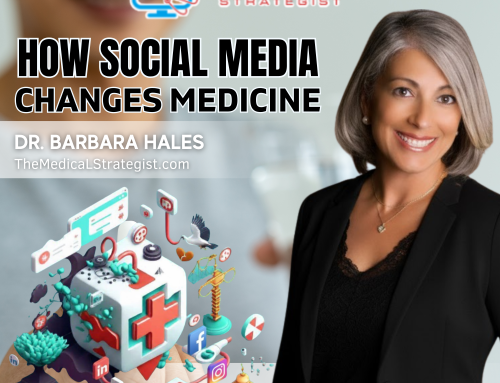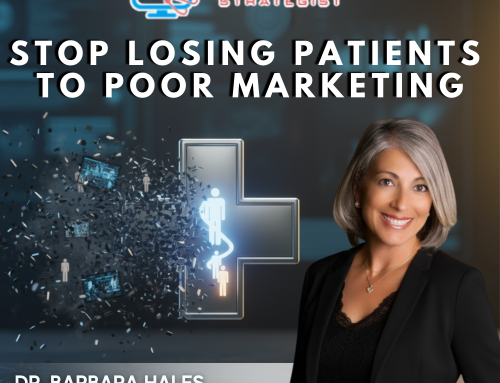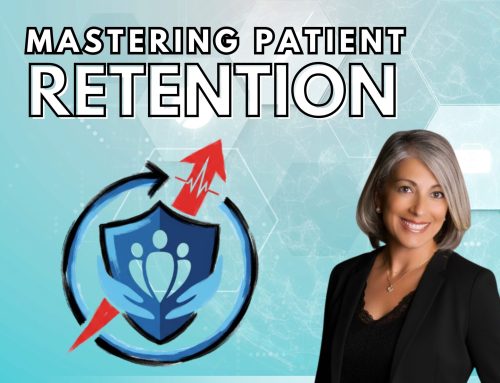Podcast: Play in new window | Download
Subscribe: RSS
Are you spending hours every night buried in patient charts long after the last appointment? You’re not alone. The average doctor now spends nearly 2 hours on documentation for every hour of patient care — fueling burnout, frustration, and even early retirements.
But what if you could reclaim 2–3 hours every day without sacrificing patient care? What if technology could help you finish your notes before leaving the office — and let you be home for dinner again?
In this episode of Marketing Tips for Doctors, host Dr. Barbara Hales explores how artificial intelligence (AI) is transforming healthcare documentation. Through real stories and case studies, she shows how physicians are reducing charting time by up to 70%, improving patient satisfaction, and rediscovering the joy of medicine.
Whether you’re skeptical about AI or already curious about integrating it into your practice, this episode will give you practical steps to get started — and proof that AI won’t replace doctors… but doctors who use AI well will thrive.
Key Takeaways:
“AI won’t replace doctors — but doctors who use AI will reclaim time, reduce burnout, and reconnect with their purpose.” – Dr. Barbara Hales
Connect with Barbara Hales:
-
- Twitter: @DrBarbaraHales
- Facebook: facebook.com/theMedicalStrategist
- Business website: www.TheMedicalStrategist.com
- Show website: www.MarketingTipsForDoctors.com
- Email: info@TheMedicalStrategist.com
- YouTube: @barbarahales
- LinkedIn: linkedin.com/in/barbarahales
Books:
TRANSCRIPTION: (216)
[00:11] Opening: The documentation dilemma in medicine
Barbara sets the stage by addressing one of the biggest pain points in healthcare today — overwhelming documentation demands. She highlights how physicians spend more time typing than talking to patients and how this imbalance fuels burnout. The question she poses: What if you could get that time back?
[01:20] AI is transforming healthcare workflows
Barbara explains how AI is no longer a futuristic idea — it’s already being used to transcribe patient visits, summarize notes, and organize information. This isn’t about replacing doctors; it’s about empowering them. With AI handling routine tasks, physicians can reclaim hours every day and focus on patient care.
[02:05] Case study: Dr. Patel reclaims her evenings
Barbara shares the story of Dr. Patel, a pediatrician who used to spend three extra hours each night finishing charts. After integrating an AI scribe tool, her notes were completed before she left the clinic. One patient even remarked, “It’s so nice to see you looking at me instead of the computer,” illustrating how AI enhances both efficiency and patient relationships.
[03:10] How AI works: Four key ways it saves time
Barbara breaks down how AI streamlines workflows: it transcribes patient conversations, summarizes complex histories, suggests smart templates for plans, and automates follow-ups and refills. Instead of typing everything, doctors simply review and approve — reducing documentation time by 50–70%.
[04:20] Case study: Dr. Rodriguez wins back family time
Dr. Rodriguez spent late nights charting — until his teenage daughter told him he was “always at work.” After implementing AI tools, he set a new rule: no unfinished charts leave the clinic. The result? He now spends dinners with his family instead of his laptop. AI gave him more than just hours — it gave him moments that matter.
[05:20] Practice-wide results: A clinic transforms with AI
Barbara highlights a multi-physician practice that adopted AI and saw documentation time drop by 60%. After-hours charting fell from 2.5 hours to just 20 minutes, burnout decreased, and patient satisfaction soared. As one director put it: “This technology didn’t just save us time — it saved our practice.”
[06:33] Case study: Dr. Lee rediscovers the joy of medicine
A surgeon on the brink of quitting rediscovered his passion after implementing AI note-taking. Freed from tedious paperwork, Dr. Lee spent more time mentoring and connecting with patients. One patient told him, “You’re the first doctor who sat with me and explained things slowly.” AI didn’t create distance — it created deeper human connection.
[07:30] Five action steps to reclaim 2–3 hours a day
Barbara shares a simple plan to integrate AI into your workflow:
- Test one transcription tool on five patients.
- Batch-edit notes instead of typing from scratch.
- Use smart templates for frequent conditions.
- Let AI draft responses to routine messages.
- Finish notes before leaving the clinic.
These small shifts can reclaim 10–15 hours per week.
[08:31] Medicine without sacrifice: Why AI matters now
Barbara emphasizes that physicians no longer have to choose between quality care and personal time. With AI handling the repetitive work, doctors can deliver better care while protecting their well-being. It’s not about doing more — it’s about doing what matters most.
[09:14] How to get started: Choosing the right AI tools
Barbara advises listeners to start by exploring whether their current EHR already includes AI features. If not, third-party options are widely available. She also offers guidance on evaluating these tools and integrating them seamlessly into existing workflows without disruption.



